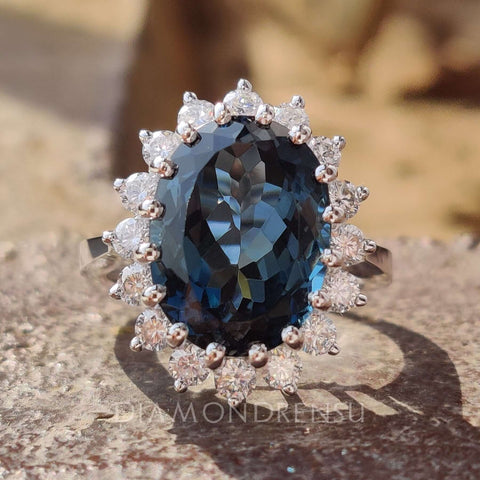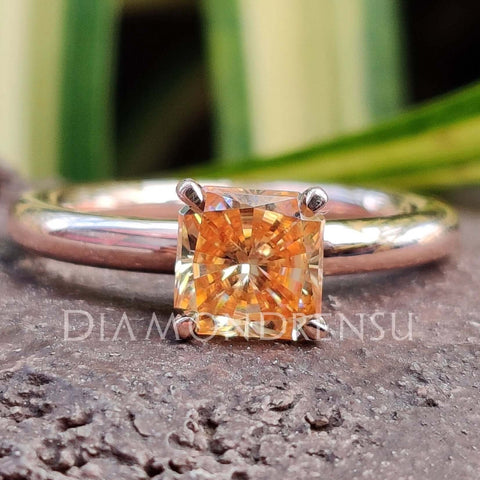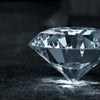
What is a Radiant Cut Diamond: Unveiling Its Unique Brilliance
Spark Big Moments, Spend Smart – Shop Engagement Ring Today!
A radiant cut diamond is a unique and striking choice, known for its brilliance and durability, featuring a silhouette that combines the elegance of the traditional emerald cut with the fire and brilliance of a round brilliant diamond. This architectural shape, characterized by its trimmed corners, is what sets it apart from other diamond cuts, making it a versatile choice for any jewelry setting. Its design is such that it maximizes the stone's brilliance, making your diamond look not only radiant but also larger than other diamonds of similar carat weight.
When you're considering a radiant cut diamond, you're looking at a stone that provides ample sparkle and a robust design, well-suited for daily wear. Developed in 1977 by Henry Grossbard, the Radiant cuts were revolutionary at the time for their ability to combine the best aspects of round and emerald cuts. These cuts feature a distinctive facet pattern that reflects light in a way that amplifies the stone's natural color and luster, thus living up to its name.
Table Of Contents
Choosing a radiant cut diamond means selecting a gem that can hide inclusions more effectively than other cuts and still delivers an eye-catching display of light. Whether set in a ring, a pair of earrings, or a pendant, a radiant cutoffers a contemporary twist on classic geometry. It’s a cut that suits a wide range of styles and has been increasingly popular among those looking for something both timeless and modern.
Overview of Radiant Cut Diamonds
When you choose a radiant cut diamond, you're selecting a stone that combines the elegance of the traditional round cut with a more modern touch. Known for its brilliance and versatility in shape, whether square or rectangular, this cut makes a confident statement with its unique cropped corners and remarkable fire.
History and Origin
The radiant cut was developed in 1977 by Henry Grossbard, who wanted to combine the best aspects of round brilliant and emerald cut diamonds. With a desire to create a cut that had the brilliance of the former and the elegant shape of the latter, Grossbard's radiant cut rapidly gained popularity and became a highly sought-after diamond shape.
Defining Characteristics
| Characteristic | Description |
|---|---|
| Cut Style | Radiant cut diamonds feature a rectangular or square shape with cut corners, combining the elegance of emerald cuts and the brilliance of round cuts. |
| Facets | Typically have 70 facets, allowing for excellent light reflection and a vibrant sparkle. |
| Shape | Rectangular or square, with trimmed corners, offering a versatile and modern appearance. |
| Brilliance | Known for their brilliance and fire, providing a balance between the step-cut and brilliant-cut styles. |
| Popularity | Popular choice for engagement rings and other jewelry due to its unique combination of shape and sparkle. |
| Settings | Can be set with prongs, bezel settings, or other styles to enhance their overall appeal. |
| Versatility | Suitable for various jewelry designs, making them a versatile choice for different preferences and styles. |
Angular Shape: This cut is defined by its angular silhouette, which is made possible by its intricate faceting pattern.
Radiant Cut Vs. Other Diamond Shapes
| Characteristic | Radiant Cut | Round Cut | Princess Cut | Emerald Cut |
|---|---|---|---|---|
| Shape | Rectangular or square with cut corners | Round | Square or rectangular with pointed corners | Rectangular with cut corners |
| Facets | 70 facets | 57 or 58 facets | Usually 76 facets | Step-cut with long lines |
| Brilliance | High brilliance and fire | High brilliance | High brilliance | Elegance with subtle brilliance |
| Popularity | Popular choice for its unique shape and sparkle | Classic and timeless, widely popular | Modern and popular for engagement rings | Elegant and sophisticated |
| Versatility | Versatile for various jewelry designs | Adaptable for different settings | Suitable for various settings | Elegant and adaptable |
In choosing a radiant cut diamond, you're embracing a piece of modern diamond history, appreciating the art of diamond cutting, and selecting a cut known for its durability, versatility, and unrivaled sparkle.
The 4Cs of Radiant Cut Diamonds
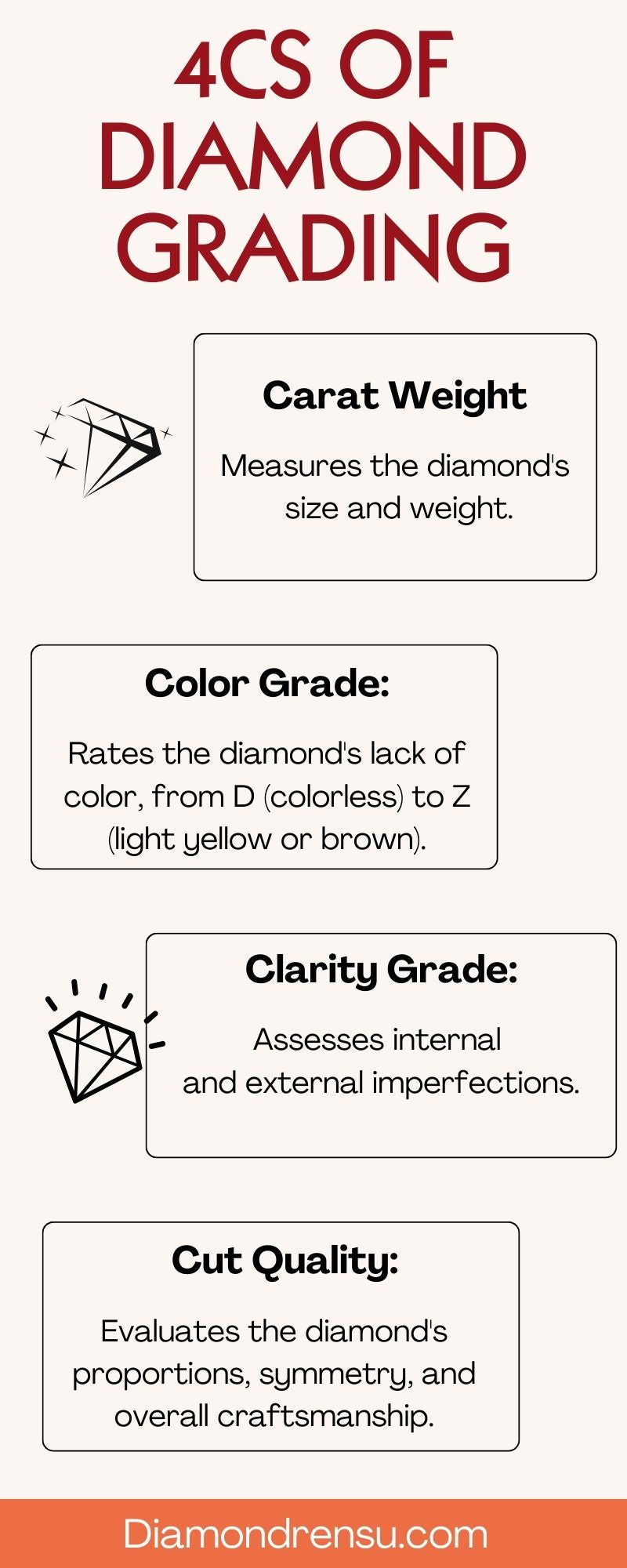
When considering a radiant cut diamond, the 4Cs—cut, color, clarity, and carat - are crucial in determining its quality and appeal. These factors influence not only the brilliance and visual appeal but also the diamond's overall value.
Cut Quality and Faceting
The cut quality of a radiant diamond is pivotal as it determines the stone's fire and brilliance. Your radiant cut diamond should have precise faceting to maximize the reflection of light. The proportions and length to width ratio affect its shape and sparkle, with a typical range from 1.00 to 1.35 being most balanced.
Color Grade and Appearance
Color grade is essential in the appearance of a radiant cut diamond. With a color range usually from D (colorless) to Z (light yellow), a higher grade means a rarer and more valued stone. The cut can either hide or reveal the hue, so carefully consider which color grade complements the cut for your desired look.
Clarity and Inclusions
Clarity refers to the absence of inclusions and blemishes. The unique faceting of a radiant cut can help hide small imperfections, but you should aim for a clarity grade that ensures inclusions don't distract from the diamond's sparkle. A high clarity grade means a cleaner look, though minor inclusions may be acceptable if they aren't visible to the naked eye.
Carat Weight and Size
Carat weight directly influences the size of the diamond, yet it's not the only factor to consider for impact. Even a diamond with a smaller carat weight can appear larger if it has good proportions and a high cut quality. So, consider both carat weight and cut when determining the diamond's overall presence.
Factors Affecting the Appearance of Radiant Cut Diamonds
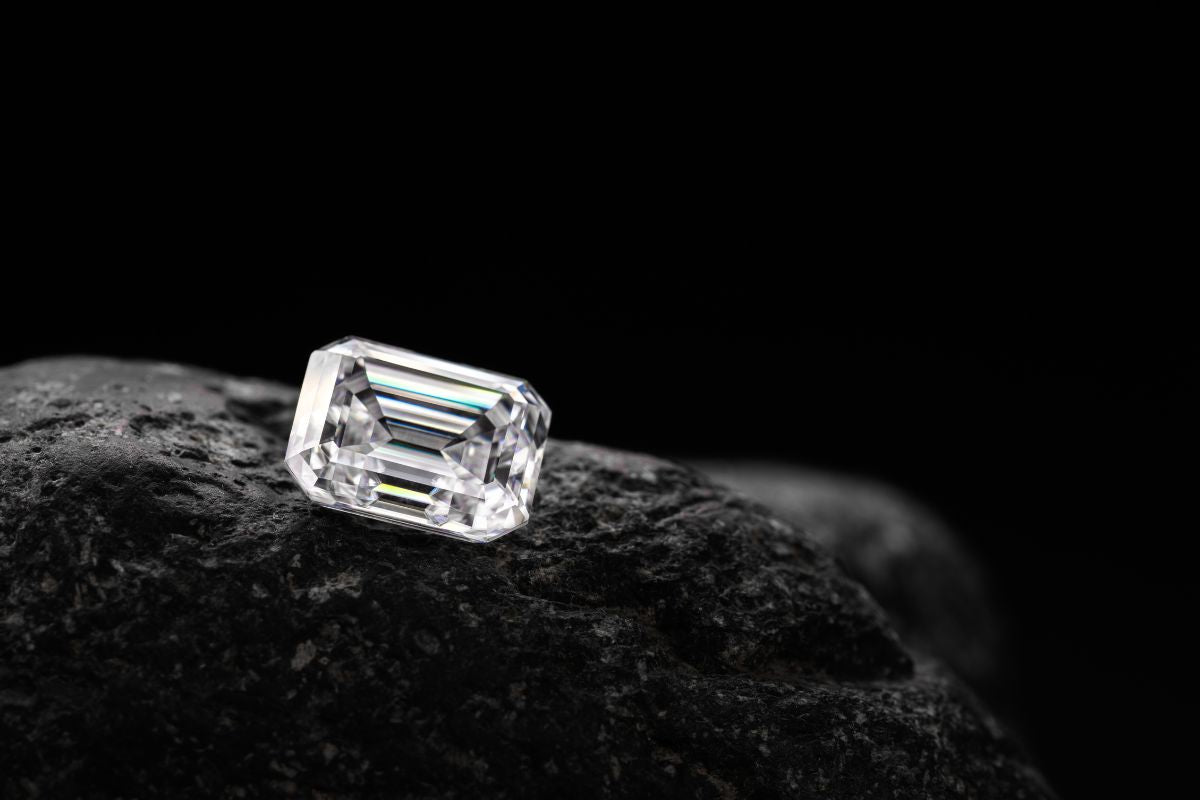
When you examine radiant cut diamonds, your perception of its beauty is influenced by several technical aspects. Each factor intricately contributes to the stone’s overall brilliance and sparkle.
Impact of Facet Pattern
The facet pattern plays a critical role in the appearance of radiant cut diamonds. This cut features a unique combination of the brilliant facet pattern seen in round diamonds alongside the step cuts like those in an emerald cut. The arrangement and shape of facets, especially on the crown and pavilion, manipulate light to enhance the diamond's brilliance. A well-executed facet pattern can hide inclusions and improve the visual appeal, making the diamond appear more sparkling and vibrant.
Influence of Length to Width Ratio
Your radiant cut diamond’s proportions, particularly the length to width ratio, dictate its shape and can impact its aesthetic appeal. The desired ratio typically falls between 1.00 and 1.35. Diamonds closer to a 1.00 ratio will appear more square, while those with higher ratios look more elongated. This ratio can affect how large the diamond looks as well as its sparkle.
Effect of Girdle Thickness
The girdle of your radiant cut diamond, which is the thin perimeter dividing the crown from the pavilion, must have an optimal thickness. A girdle that is too thick can add unnecessary weight and might negatively impact the diamond’s balance and proportions. Conversely, a girdle that is too thin may make the diamond prone to chipping. The right girdle thickness is essential to ensure durability while maximizing light reflection for greater brilliance.
Choosing a Radiant Cut Diamond

When selecting a radiant cut diamond, it's important to focus on the setting, certifications, and your budget. These elements will ensure that your choice aligns with both your aesthetic preferences and practical considerations.
Selecting the Right Setting
Choosing the right setting for your radiant cut diamond is essential as it will showcase the stone's unique beauty. The setting should complement the diamond's clean lines and trimmed corners. For an engagement ring, consider a setting that provides both protection and visibility to this distinctive cut. Prong settings, especially four or six prongs, are popular as they secure the diamond while allowing maximum light to enter. For added brilliance, a halo setting can accentuate the diamond's size and sparkle.
Considering Diamond Certifications
To ensure you're getting the quality you intend to purchase, always opt for certified diamonds. Certifications, such as those from the Gemological Institute of America (GIA), provide an authoritative analysis of the diamond's color, clarity, cut, and carat weight. A GIA certificate is particularly valuable, as it indicates the stone has been evaluated by a reputable laboratory. Be sure to review the certification to understand the diamond's properties and ensure it meets your expectations for purchasing jewelry.
Balancing Quality and Budget
It's crucial to find a balance between the radiant cut diamond's quality and your budget. You do not necessarily need to aim for the highest grades in color and clarity to find a beautiful diamond. Here's a quick guide:
- Color: Look for a diamond that appears white in relation to its setting, knowing that slight color variations can affect price significantly.
- Clarity: Choose a stone that is eye-clean, meaning inclusions can't be seen with the naked eye.
- Budget: Prioritize what's most important to you. Sometimes a slight trade-off in size or clarity can accommodate a more intricate setting or vice versa.
Keep in mind that a radiant cut diamond often appears larger than other diamonds of the same carat weight due to its shape, which can be a budget-friendly characteristic.
Styling Radiant Cut Diamonds
Radiant cut diamonds combine the elegance of emerald cuts with the brilliance of round stones, making them a versatile choice for various jewelry settings. Their unique cut creates an exceptional sparkle that can elevate the style of any piece.
Popular Setting Styles
When choosing a setting for your radiant cut diamond, consider the solitaire for its timeless simplicity that directs all attention to the stone. Alternatively, the radiant cut thrives in a halo setting, where it is encircled by smaller diamonds to magnify its sparkle. For a contemporary look, the bezel setting secures the diamond with a sleek metal rim, offering both modern aesthetics and protection.
- Solitaire: Highlights the diamond's brilliance with minimal distraction.
- Halo: Adds volume and a glamorous touch to the radiant cut diamond.
- Bezel: Offers a modern, secure frame around the diamond.
Pairing with Other Jewelry
Radiant cut diamonds are remarkably adaptable, allowing for smooth pairing with various jewelry pieces. Whether you're matching with earrings, bracelets, or necklaces, aim for pieces that complement the diamond's cut without overshadowing it. Pay attention to the metal and gemstones of accompanying pieces to ensure a cohesive and elegant look.
- Earrings and bracelets: Choose designs with similar lines or stones.
- Necklaces: Opt for complementary pendants that echo the radiant cut's shape.
Engagement Ring Considerations
Considering a radiant cut diamond for your engagement ring is an excellent choice for a standout piece that exudes sophistication. Renowned vendors like James Allen offer a wide array of radiant cut rings that can be tailored to personal styles. Keep in mind the diamond's size and setting, as engagement rings are a long-term investment and a statement of style.
- Engagement Ring Size: Match the carat weight to your personal style and budget.
- Setting Durability: Ensure the setting protects the diamond's corners, which may be prone to chipping.
When styling your radiant cut diamond, it's crucial to align the setting and accompanying jewelry with the distinctive attractiveness of the stone. Your choices should celebrate the cut's unique character and meet the demands of wearability and personal taste.
Purchasing a Radiant Cut Diamond
When you're looking to buy a radiant cut diamond, your options range from traditional retail stores to online platforms. It's essential to understand the factors that affect pricing and appreciate the design process for creating that perfect piece of jewelry.
Retail Vs. Online Options
Retail:
- Pros: You can physically inspect the diamond, interact with knowledgeable staff, and experience immediate gratification.
- Cons: Limited selection and potentially higher prices due to overhead costs.
Online:
- Examples include reputable sellers like James Allen.
- Pros: Broader selection, often more affordable, and provides high-quality images.
- Cons: Cannot view the diamond in person prior to purchase, though customer service and return policies can mitigate risk.
Understanding Pricing
Factors Affecting Cost:
- Cut Quality: Reflects the diamond's brilliance and is crucial in radiant cuts.
- Carat Weight: Larger diamonds command a higher price.
- Clarity and Color: Imperfections decrease value, while colorlessness can increase it.
Customization and Design
Custom Options:
- Choose Setting: Select from solitaire, halo, three-stone, among others for your radiant cut diamond.
- Metal Selection: Options like platinum or gold will affect the overall design and cost.
Design Process:
- Start with an idea or image, and consult with jewelers or use online tools to visualize your design.
- Consider if the unique qualities of a radiant cut diamond, like its trimmed corners, fit with your design ambitions.
In finding and customizing your perfect radiant cut diamond, prioritize reputable retailers or online platforms, like James Allen, that provide quality images and detailed descriptions. Remember, a well-informed purchase and customization lead to acquiring a precious piece of jewelry that lasts a lifetime.
Care and Maintenance
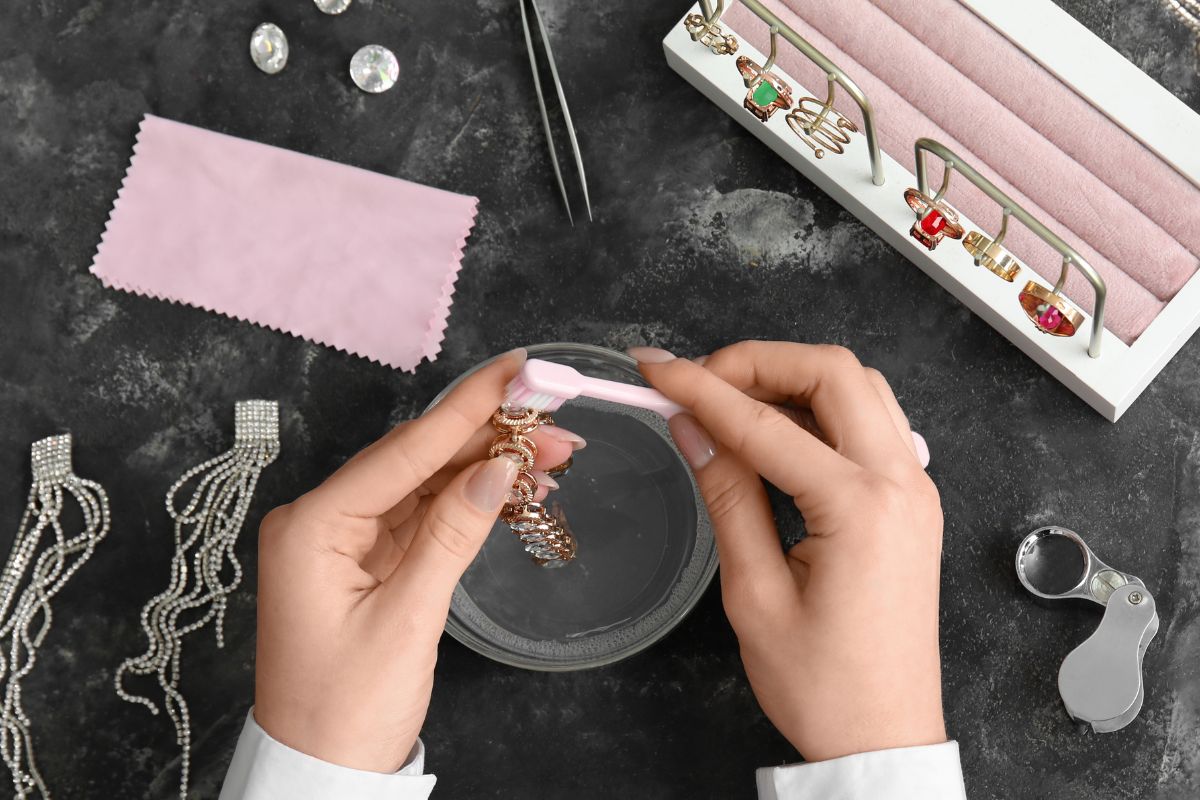
Proper care and maintenance are essential to preserving the beauty and brilliance of your radiant cut diamond. This section will equip you with specific, actionable advice to ensure your jewelry remains in pristine condition.
Cleaning and Upkeep
- Routine Cleaning: To keep your radiant cut diamond sparkling, regular cleaning is recommended. You can use a gentle dish soap and warm water solution. Employ a soft-bristled brush to gently scrub the diamond, taking care to reach beneath the setting where grime can collect. After scrubbing, rinse your diamond jewelry under warm running water, and pat dry with a soft, lint-free cloth.
- Frequency: Aim to clean your diamond every two weeks or whenever you notice buildup. This will maintain the stone's fire and prevent accumulated oils and dirt from dulling its appearance.
Long-Term Durability
- Preventive Measures: While radiant cut diamonds are renowned for their durability, taking certain precautions can ensure their longevity. Whenever engaging in activities that could expose your jewelry to harsh chemicals, impacts, or scratches, it's wise to remove your diamond pieces.
- Storage: When not in use, store your radiant cut diamond separately from other jewelry to prevent scratches. Wrapping the stone in a soft cloth or placing it in a padded jewelry box will afford additional protection.
By adhering to these care guidelines, you can safeguard the lasting durability and allure of your radiant cut diamond jewelry. Remember that consistent cleaning and mindful maintenance are key to preserving the quality of your precious stone.
Trends and Innovations
The radiant cut diamond, known for its brilliance and versatility, continues to be impacted by technological advancements and shifting consumer tastes. In this landscape, innovations and trends revolve around the creation and consumer preferences of these stunning gems.
Lab-Created Radiant Cut Diamonds
Lab-created diamonds have surged in popularity, offering you an eco-friendly and often more affordable alternative to their mined counterparts. Radiant cut lab-grown diamonds mirror the same aesthetic qualities as those extracted from the earth, boasting significant improvements in sustainability and ethical sourcing. As technology progresses, these diamonds are becoming almost indistinguishable from natural ones in both appearance and quality.
Evolving Consumer Preferences
Consumer preferences are moving towards personalization and ethical choices. You might find yourself drawn to radiant cut diamonds not just for their beauty, but also for their journey to your jewelry box. With increasing awareness, you're likely leaning towards diamonds that have a responsible backstory. Furthermore, trends suggest a growing demand for unique, custom-tailored cuts that reflect personal style, with the radiant cut offering a modern twist on traditional elegance.
Conclusion
Your understanding of a radiant cut diamond is now comprehensive. Recognized for its remarkable brilliance and durability, this cut is an ideal choice if you seek a balance between elegance and practicality. With typically 70 facets, the radiant cut offers a vibrant light display, setting it apart from other diamond shapes.
- Facets: Boasts 70 or more
- Shape: Hybrid of traditional round and emerald cuts
- Brilliance: Exceptional light reflection
- Durability: Beveled corners resistant to chipping
The radiant cut's versatility in size and ratio complements various settings and jewelry styles, making it a favorite for both engagement rings and fashion pieces. Its trimmed edges enhance durability, excellent for an active lifestyle.
Whether you choose a square radiant cut or a more rectangular shape, ensure the cut's quality to maximize the stone's fire and light performance. Reflect on your personal style and how this cut could meet your aesthetic and functional needs before making your final decision.
Frequently Asked Questions
Radiant cut diamonds combine the elegance of traditional cuts with a modern twist to offer brilliance and durability. Here are answers to some of the most common questions about radiant cut diamonds.
Q: What distinguishes a radiant cut diamond from other diamond cuts?
A radiant cut diamond is known for its trimmed corners and a complex facet pattern which gives it a vibrant and lively appearance. This cut features a unique blend of the linearity of an emerald cut and the brilliance of a round cut.
Q: How does a radiant cut diamond compare to a princess cut?
While both cuts are square or rectangular, a radiant cut diamond typically has cut corners, which make it more durable than a princess cut. The radiant also has a more brilliant facet pattern, resulting in greater sparkle.
Q: What are the benefits of choosing a radiant cut for an engagement ring?
Radiant cut diamonds are sought after for engagement rings due to their versatility in style, their exceptional brilliance and durability, and their ability to hide inclusions better than other cuts.
Q: How does carat weight affect the appearance of a radiant cut diamond?
The carat weight of a radiant cut diamond affects its appearance in terms of size and presence on the finger. Larger carats may enhance the stone's brilliance and allow the intricate facet pattern to be more appreciable.
Q: Are radiant cut diamonds more affordable compared to other popular diamond cuts?
Radiant cut diamonds can be more affordable compared to other cuts like the round brilliant, as they often use more of the raw diamond during cutting, reducing waste and the overall cost.
Q: What characteristics should one consider when purchasing a radiant cut diamond?
When purchasing a radiant cut diamond, consider the cut quality, clarity, color, and the length-to-width ratio, which can affect the stone's profile and how it will look in a setting.
Checkout some of our top collections:
Leave a comment
Please note, comments must be approved before they are published.









